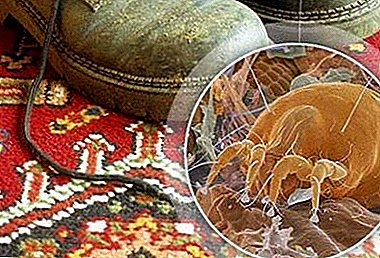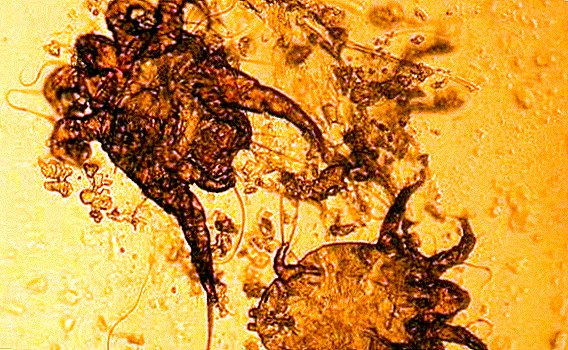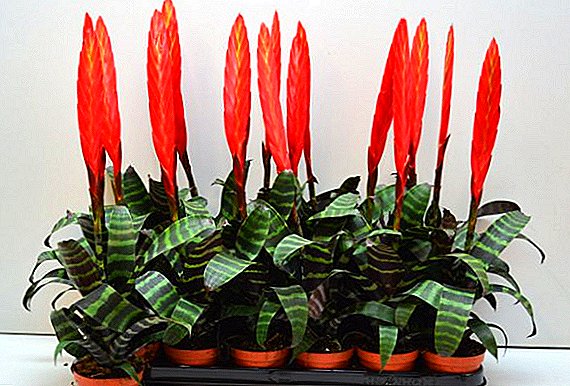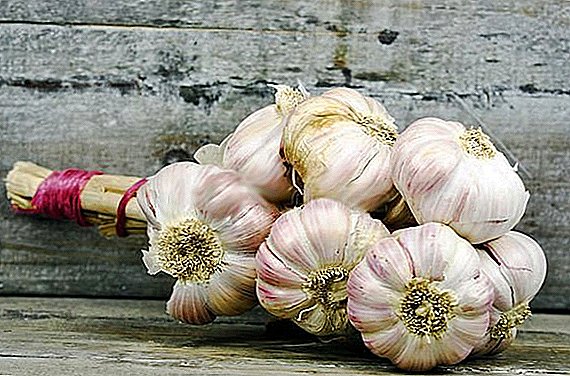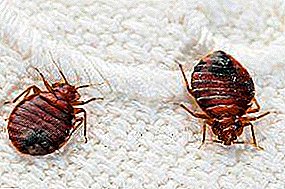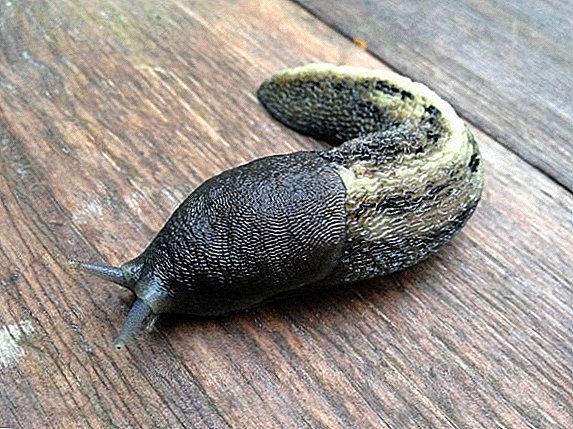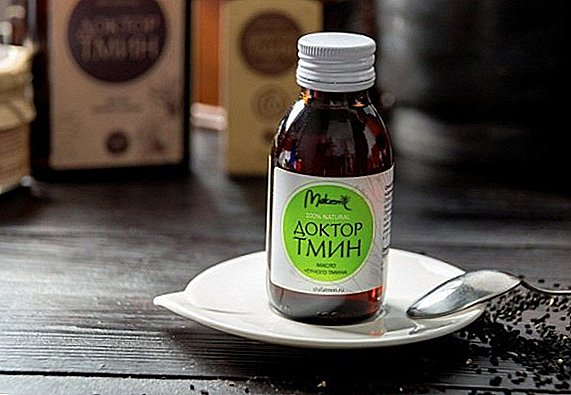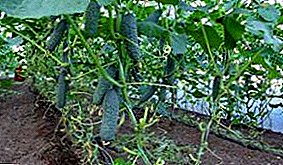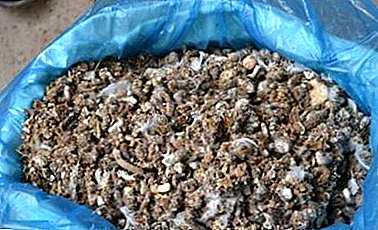
If you want to see your harvest rich and fruitful, experienced gardeners recommend looking at such a fertilizer as chicken manure. This is an excellent organic substance, with which you can achieve maximum biological processes in the soil, while the plants will receive valuable carbon dioxide.
However, be careful - it should be applied very carefully, accurately calculating the concentration. If you do everything wisely, then as a result you will get a strong and effective tool for feeding your garden.
Composition and useful properties
 What is so valuable chicken droppings?
What is so valuable chicken droppings?
First of all, it is a completely natural fertilizer without chemicals. For comparison: the amount of nitrogen in it is 1.2-1.9%, whereas in the mullein it is only 0.5%, and in sheep manure only 0.9%. Not only nitrogen, but also the percentage ratio of phosphorus is three times more than that of other similar fertilizers. Moreover, phosphorus in chicken feed is contained in the form of nucleoproteins and phosphatites.
As for potassium, which is also necessary for good plant growth, here it is in the form of soluble salts. Experienced agronomists and gardeners have long noted these qualities of chicken manure. If you compare this dressing with expensive mineral fertilizers, it turned out that it is not inferior to them in the amount of nutrients.
Chicken droppings are poorly washed out of the soil, but at the same time quickly reaches the roots of plants. At the same time, the amount of salts in the soil is normal according to the results of analyzes. Result: high-quality and fast harvest.
Efficiency is noted not only in the growth rate and ripening of fruits, but also the content of vitamin, proteins and other trace elements in the crop. For example: the amount of sugar in sugar beet, flavored with chicken fertilizer, will be 10-15% more.
Agronomists note other important qualities of bird droppings.:
- does not burn and does not crack;
- does not contain toxin and nitrates;
- contains a large number of such necessary substances as nitrogen, potassium, phosphorus, iron, magnesium, calcium;
- it is not necessary to add it every season; it is enough to do it once in three years;
- provides balanced nutrition of many crops;
- soil analysis after fertilization is positive, its acidity and microflora is optimal;
- the duration of crop aging is reduced;
- adds additional immunity to plants, which reduces the risk of disease and increases resistance to adverse weather factors;
- does not harm the roots of crops.
But, despite all the qualities and dignity, chicken droppings need to be added strictly according to the instructions. It is ideal for some plants during the entire period of growth, for some - only at a certain time, and to others - is completely contraindicated.
What to do with him?
 If you recycle chicken manure, you can get a great fertilizer.
If you recycle chicken manure, you can get a great fertilizer.
It can be purchased in finished form., and you can prepare yourself, of course, if you keep the chickens.
In any case, you should know which crops love to “feast on” them, and which, on the contrary, may die.
As a fertilizer
Let's see in which cases the use of such a natural fertilizer will benefit. As a rule, bird droppings are used as feedings:
- vegetables;
- berries;
- fruit trees;
- bushes.
For example, cabbage and eggplants feel very comfortable after fertilizing bird droppings. Tomatoes and cucumbers can be fed two or three times a season. Agronomists claim that As a result of this care for plants, an environmentally friendly crop of high quality and excellent taste is obtained..
As for garlic, onions, and other greens, you should use chicken droppings carefully. Fertilizing these vegetables is possible only in early June, when they are experiencing the beginning of the growing season. After watering, you can see how the greens fluff and increase the growth rate.
Precautionary measures
Chicken manure in its pure form is harmful to plants, as it is very concentrated, therefore, it is necessary to use it only in diluted form. For reference. Out of 1 kg of bird droppings, an average of 0.62 cu. meters of gas, 60% of which is methane.
In addition, methane and ammonia are released from the waste products of poultry in the decomposition process, which has a very negative effect on crops. Negative effect on the soil is lime, which makes up 2% of chicken manure..
In order for the harvest to please the gardener, bird droppings must be properly prepared and properly stored, as it dries quickly. How to process chicken droppings? To do this, use the methods of infusion and composting.
How to properly collect and store?
 First, let's figure out how to properly collect litter. To do this, you need to stock up on packaging, sieve, broom and protective gloves and a suit (this is a prerequisite, since the litter often contains helminth eggs and bacteria).
First, let's figure out how to properly collect litter. To do this, you need to stock up on packaging, sieve, broom and protective gloves and a suit (this is a prerequisite, since the litter often contains helminth eggs and bacteria).
Determine the place of accumulation of waste products of chickens. This is usually a perch zone or feeding area. Well if in this place will lie straw, hay or peat. Organic base for future fertilizer - only plus. Do not hesitate, collect everything in a container.
Then it all depends on how you store the fertilizer.
Infusion
Processing of bird droppings into fertilizer is carried out using infusion on water. To do this, follow the instructions:
- Take the harvested chicken manure or buy granulated droppings in the store if you do not have your chickens, and empty it in a bucket or barrel.
- Fill all with water and leave to ferment for 10-15 days.
- After the expiration date, dilute the mixture with 1:20 water and irrigate at the rate of 0.5 liters of fertilizer per plant.
- Pour the liquid with a watering can. Do this so that water does not get to the roots. Many people do not water the plants themselves, but the land between the rows.
- After watering at the bottom of the watering can you have a little thick. Do not throw it away, but pour it under a fruit tree or shrub.
- After fertilization, the plants need to be watered with ordinary water. Pay special attention to the leaves: wash off the solution.
Compost
Another popular method of harvesting fertilizer is compost heaps. Compost is a mixture of chicken manure, straw, hay or peat, laid out in layers.. Often here the gardeners add cow or rabbit manure.
 If you prepare compost from one chicken manure and, for example, straw, then the layer of the first ingredient should not exceed 20 cm, and the second - 30 cm.
If you prepare compost from one chicken manure and, for example, straw, then the layer of the first ingredient should not exceed 20 cm, and the second - 30 cm.- Alternate the layer until the heap reaches 1 meter.
- Top compost can be covered with a film: so you get rid of the smell, and the process of decomposition in the heat will be faster.
Such a fertilizer is scattered in autumn, winter or early spring in the garden. The best time is autumn after harvest, as over the winter it is evenly distributed throughout the soil under the influence of rain and melt water.
Use of special equipment
The best way to store and process chicken manure is to dry and granulate it.. This is done on the production with the help of special equipment. The advantages of this fertilizer are:
- Raw waste quickly loses nitrogen, the average loss is 50% of the substance for six months. Granule manure retains its beneficial properties without loss.
- Granulated droppings cleared of debris, weed seeds, helminth larvae and insects.
- No unpleasant smell.
- Easy to dose, following the instructions.
If you have a little bit of such litter from the season, then it is better to store it peppered with peat in boxes with holes for good air circulation in a dry room. Chicken droppings have a unique pH level of 6.6, which is often called a soil-forming factor.
Really, after fertilizing with this substance, gardeners not only collect excellent harvests, but also improve the soil. Humus forms in the ground and soil is deoxidized.


 If you prepare compost from one chicken manure and, for example, straw, then the layer of the first ingredient should not exceed 20 cm, and the second - 30 cm.
If you prepare compost from one chicken manure and, for example, straw, then the layer of the first ingredient should not exceed 20 cm, and the second - 30 cm.